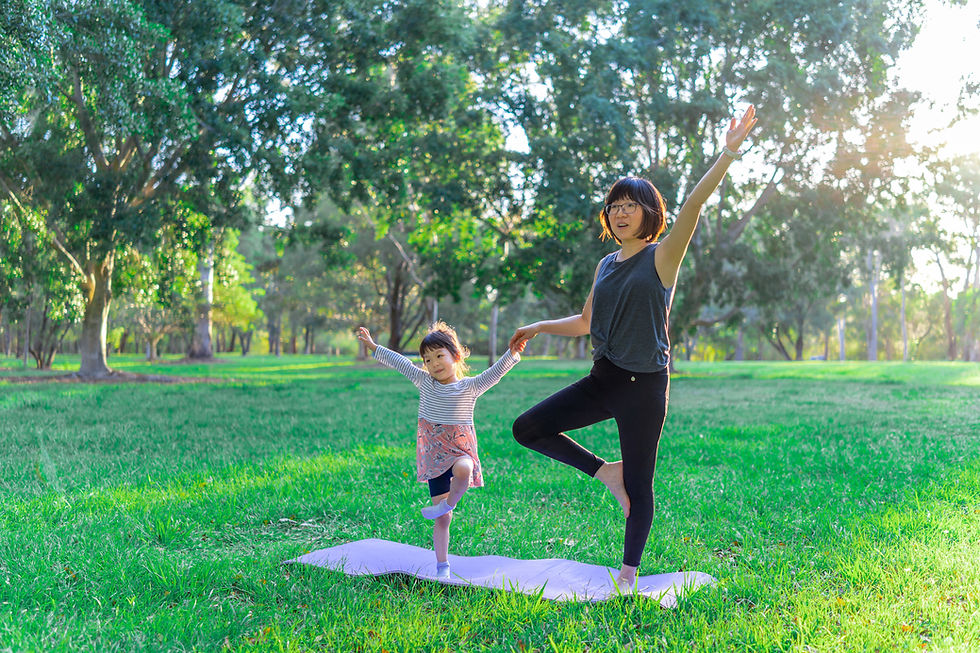Flexibility vs. Mobility: Why the Difference Matters
- melaniemovewell
- Feb 16
- 3 min read
Updated: Mar 4

Many people use the terms flexibility and mobility interchangeably, but they are not the same. While both play a role in movement, mobility is what truly determines how well you move and function in daily life. Understanding the difference can help you improve movement quality, prevent injuries, and maintain long-term joint health.
This distinction becomes even more important with age. Joint stiffness, muscle weakness, and decreased coordination can make everyday activities more challenging. Without regular movement and strength training, mobility declines, increasing the risk of falls, injuries, and loss of independence. Staying proactive with mobility work helps you maintain the ability to move freely and comfortably for years to come.
What is Flexibility?
Flexibility describes the ability of joints and their surrounding muscles, tendons and ligaments to stretch and move through an unrestricted, pain-free range of motion. It is passive, meaning it does not require strength or control, just how far a joint or muscle can move when assisted. Think of flexibility as the potential for movement, like being able to touch your toes when stretching.
Key Features of Flexibility:
Measured by how far a joint can move when assisted muscle
Dependent on soft tissue elasticity
No strength, control, or coordination required
Improved through static stretching
What is Mobility?
Mobility, on the other hand, is the ability to actively move a joint through its full range of motion with control and stability. It combines flexibility with strength, coordination, balance, and motor control. Functional mobility is what allows you to perform everyday tasks like squatting, reaching overhead, or getting up from the floor without struggle.
Key Features of Mobility:
Ability to actively move a joint through a range of motion
Requires strength, coordination, and stability
Essential for real-life movement and injury prevention
Reduces risk of joint pain and stiffness
Improved through strength training and dynamic movement
Why Mobility Matters More Than Flexibility
While flexibility is important, mobility is what truly determines your ability to move well. You can be flexible but still lack mobility if you do not have the strength and control to use that range of motion effectively. For example, you may be able to stretch your hamstrings far, but if you lack hip mobility, you may struggle with deep squats, lunges or even getting up and down from the floor.
Benefits of Good Mobility:
Protects joints from wear and tear
Reduces the risk of injury
Improves balance and coordination
Enhances movement efficiency and performance
Supports independence as you age
How to Improve Mobility
Since mobility includes flexibility, strength, and coordination, improving it requires a combination of exercises:
Dynamic Stretching – Controlled movements like leg swings and arm circles help improve flexibility and prepare muscles for movement.
Strength Training – Exercises like squats, lunges, and overhead presses enhance joint stability and strength.
Balance and Coordination Drills – Single-leg exercises, step-ups, and agility drills (like side to side movements) improve control and body awareness.
Joint-Specific Mobility Work – Exercises like deep squats, shoulder circles, and ankle flexion drills help improve movement in key areas.
Improve Mobility, Improve Function
Flexibility gives you the potential to move, but mobility ensures you can move efficiently and safely in real life. Prioritizing mobility over passive stretching will help you build better movement patterns, prevent injuries, and maintain an active lifestyle.
Good mobility contributes to healthier aging by preserving independence, reducing injury risk, and improving overall quality of life. Instead of just focusing on how far you can stretch, work on improving how well you can control and use your range of motion, your body will thank you for it!
Know someone who struggles with movement or joint pain? Share this with them, it could help them move better and stay active! And if you’re ready to improve your mobility, prevent injuries, and build strength, I can help. I offer customized fitness and mobility programs designed to help you:
Build a personalized exercise routine tailored to your goals
Incorporate anti-inflammatory nutrition strategies to reduce pain
Stay motivated with ongoing support and accountability
Ready to take control of your health and start living a more active life. Contact me today to learn more! Get started today
Want more tips on movement, injury prevention, and staying active as you age? Sign up for my monthly Move Well Newsletter and get evidence-based advice straight to your inbox.
Disclaimer:
This site offers health, fitness and nutritional information and is designed for educational purposes only. You should not rely on this information as a substitute for, nor does it replace, professional medical advice, diagnosis, or treatment. If you have any concerns or questions about your health, you should always consult with a physician or other health-care professional. Do not disregard, avoid or delay obtaining medical or health related advice from your health-care professional because of something you may have read on this site. The use of any information provided on this site is solely at your own risk.
.png)



Comments